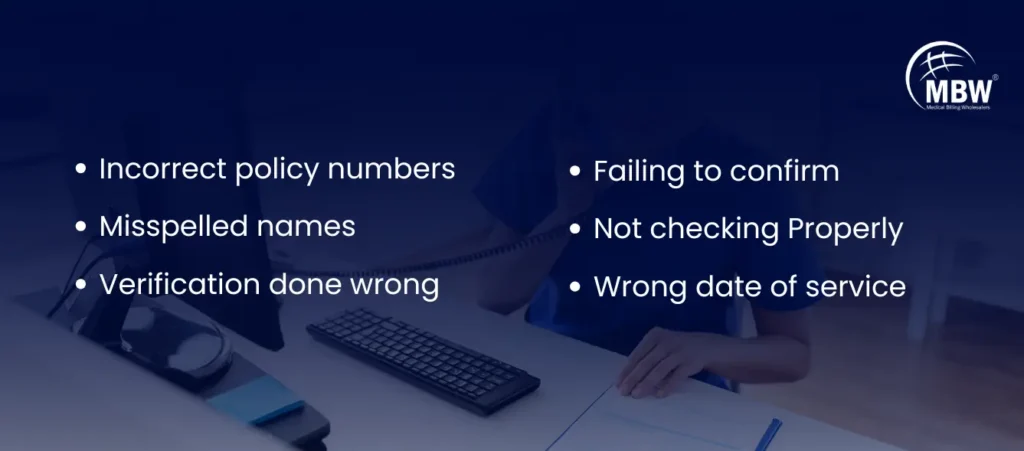In today’s healthcare environment, benefit verification in medical billing is no longer just a back-office task—it’s a critical first step in preventing claim denials and unexpected patient billing issues. As insurance plans grow more complex, verifying a patient’s eligibility and benefits before services are rendered has become essential for smooth billing operations.
This blog explains the step-by-step benefit verification process, common pitfalls to avoid, and how your practice can improve patient satisfaction while minimizing reimbursement delays. Whether you’re a provider, billing manager, or RCM specialist, this guide helps you master the workflow and reduce preventable revenue leaks.
What Is Benefit Verification in Medical Billing?
Benefit verification in medical billing refers to the process of confirming a patient’s insurance coverage before providing medical services. This step ensures that the patient is eligible for the service and determines how much of the cost will be covered by the insurer.
As a matter of fact, it includes verifying the patient’s plan details, checking for procedure-specific coverage, and identifying any financial responsibilities such as co-pays or deductibles.
Why Is Benefit Verification Crucial for Revenue Cycle Management?
Benefit verification in medical billing is a crucial component that directly impacts payment accuracy and processing speed. Without accurate verification, providers risk denials, delayed reimbursements, and dissatisfied patients.
Additionally, this process prevents surprises by letting patients know their out-of-pocket expenses upfront. Therefore, it reduces billing disputes and improves the overall collection rate for providers.
Step-by-Step Process for Benefit Verification
1. Collect Patient Information Accurately
At the time of scheduling or registration, staff collect essential details like the patient’s name, date of birth, insurance carrier, group number, and policy ID. Accuracy at this stage is critical for all further steps.
2. Contact the Insurance Company
Verification is done either through payer portals, clearinghouses, or direct phone calls. Many practices now use automation or AI-powered tools to perform this task more efficiently.
“Calling the payer is like calling your ex—long hold times and unexpected answers!”
3. Verify Policy Status and Coverage
Staff check if the policy is active on the date of service and if the procedure is covered. This also includes reviewing plan limitations, visit caps, or network restrictions.
4. Confirm Co-pays, Deductibles, and Patient Responsibility
Next, the team identifies the patient’s financial responsibility for the visit. This includes co-pays, coinsurance, and deductible status—key points that should be communicated to the patient before the appointment.
5. Document the Verification
Everything discussed with the payer is documented in the practice management system or EMR. This record is crucial if the payer later denies the claim.
Most Common Errors in Benefit Verification and Their Impact

Small errors in benefit verification in medical billing often lead to denials. Examples include:
Incorrect policy numbers or misspelled names
Verification done for the wrong date of service
Failing to confirm procedure-specific coverage
Not checking out-of-network implications
These issues can severely delay reimbursement timelines and create administrative backlogs. According to the MGMA, up to 40% of initial claim denials stem from eligibility-related issues. All in all, verifying thoroughly upfront reduces the risk of revenue loss and rework.
Who Performs Benefit Verification in a Medical Practice?
Benefit verification specialists or trained front-office staff typically perform this task. Learn more about this role from MBW’s job profile for a Verification of Benefits Specialist.
Additionally, practices often outsource verification to experts for greater reliability and scalability—especially during peak seasons.
How Long Does Benefit Verification Take?
The time varies by insurance type and method used. Phone-based verification may take 20–30 minutes, while payer portals and automation reduce this to under 5 minutes. For specialty procedures, the time required may increase due to added layers of pre-authorization.
What’s the Difference Between Eligibility and Benefit Verification?
Although often used together, these terms differ:
| Aspect | Eligibility Check | Benefit Verification |
|---|---|---|
| What It Confirms | If the patient has active insurance | What services the insurance covers |
| Outcome | Insurance validity | Patient’s responsibility and coverage details |
| Tools Used | Payer portals, clearinghouses | Additional payer communication, policy interpretation |
Explore more in this in-depth guide from MBW.
Real-World Benefits of Verifying Insurance Coverage Early
✔️ Fewer claim denials
✔️ Better payment predictability
✔️ Transparent patient communication
✔️ Streamlined workflow
When benefit verification in medical billing is done proactively, it minimizes billing errors and improves patient-provider trust. Patients are more likely to make payments when they understand their coverage and cost responsibility. As a result, providers can achieve smoother operations and consistent revenue.
Challenges Faced During Benefit Verification
Lack of payer standardization
Manual workload
Last-minute insurance updates
Inadequate training
These issues create friction in verifying coverage efficiently. Each insurance provider has its own process, and manual errors often occur due to staff inexperience or frequent payer policy changes. Addressing these challenges requires a mix of technology, staff training, and robust documentation workflows.
How AI and Automation Are Improving Benefit Verification

Pulling real-time eligibility data
Auto-documenting benefits in EMR
Triggering alerts for uncovered procedures
Integrating with scheduling software
AI and automation simplify verification by eliminating redundant steps and speeding up data retrieval. Practices that implement these tools save time and reduce human error, particularly during peak periods or with high patient volumes. Thus, the revenue cycle becomes more reliable and predictable.
Best Practices for Benefit Verification in 2025
Verify 48–72 hours before appointments
Use digital tools for real-time access
Always re-check for returning patients
Maintain payer-specific documentation templates
Cross-train front office and billing staff
These strategies reflect the evolving needs of healthcare providers and the increasing complexity of payer systems. With proper planning, the risk of billing errors and patient disputes can be significantly reduced. In essence, a proactive approach improves long-term financial outcomes.
Can You Outsource Benefit Verification Services?
Absolutely. Providers often outsource this task to specialists like Medical Billing Wholesalers to handle the high volume and payer-specific rules.
Benefits of Outsourcing Benefit Verification Services
Saves time and staff effort
Reduces rework and denials
Improves accuracy and compliance
Scales easily during high demand
Outsourcing to a specialized billing partner gives you access to trained experts, better technology, and 24/7 support. As workflows become more automated, the cost of in-house verification increases due to training and staffing needs. Partnering with professionals ensures consistency and improved reimbursement.
Frequently Asked Questions
What is eligibility and benefits in medical billing?
Eligibility refers to whether a patient has an active insurance policy. Benefits describe what services are covered under that policy, including co-pays, deductibles, and limitations.
How to verify insurance eligibility and benefits?
Start by collecting the patient’s insurance information, then use payer tools to verify active coverage, plan inclusions, cost-sharing, and visit limitations.
Eligibility and benefits verification process in medical billing
It involves data collection, real-time verification with the payer, checking coverage levels, documenting results, and flagging any pre-authorization needs.
Is verifying eligibility necessary in claims processing?
Yes. Without it, claims may be denied, delayed, or incorrectly processed. Eligibility checks are foundational for successful claims and clean billing.
What are the steps to verify patient eligibility?
Gather insurance information
Use payer portals or clearinghouses
Confirm plan is active
Check specific coverage
Record findings in the EMR
Conclusion
Benefit verification in medical billing isn’t optional—it’s foundational. By verifying coverage early, documenting details, and training staff on payer-specific nuances, providers can reduce claim denials and improve revenue predictability.
Get started with expert verification support. Request your FREE benefit audit now.

